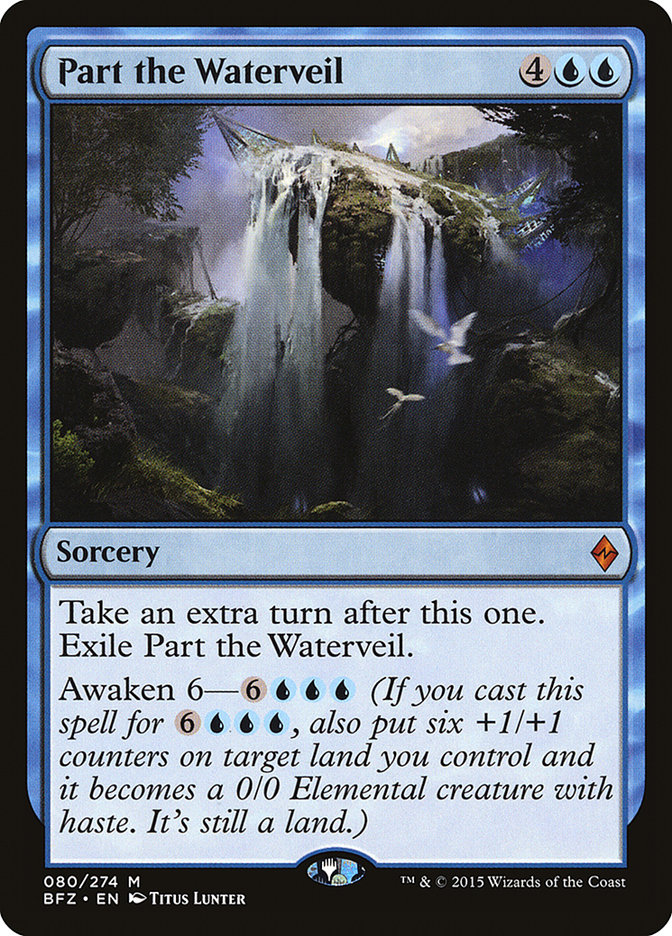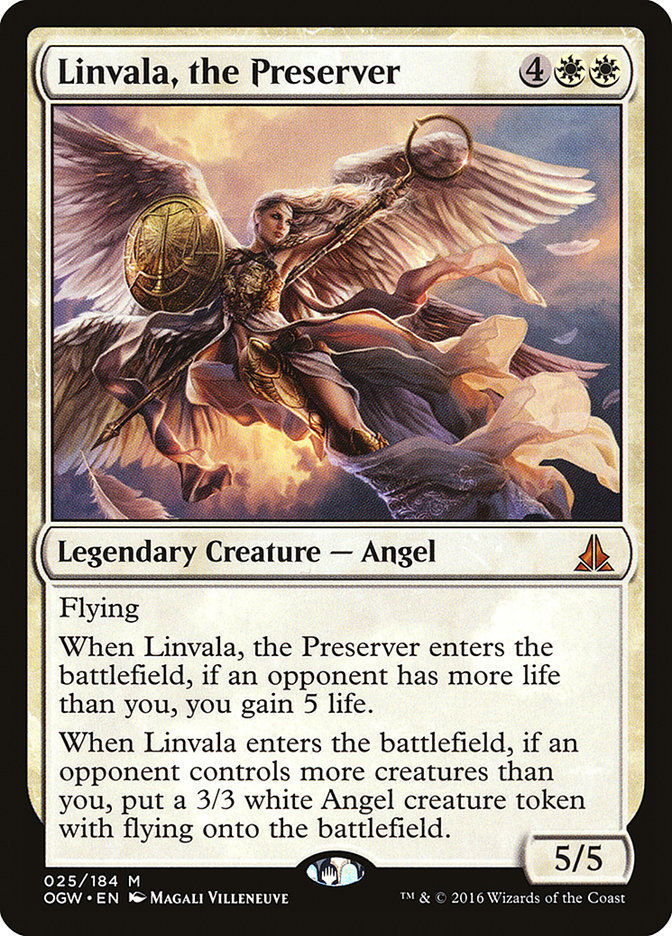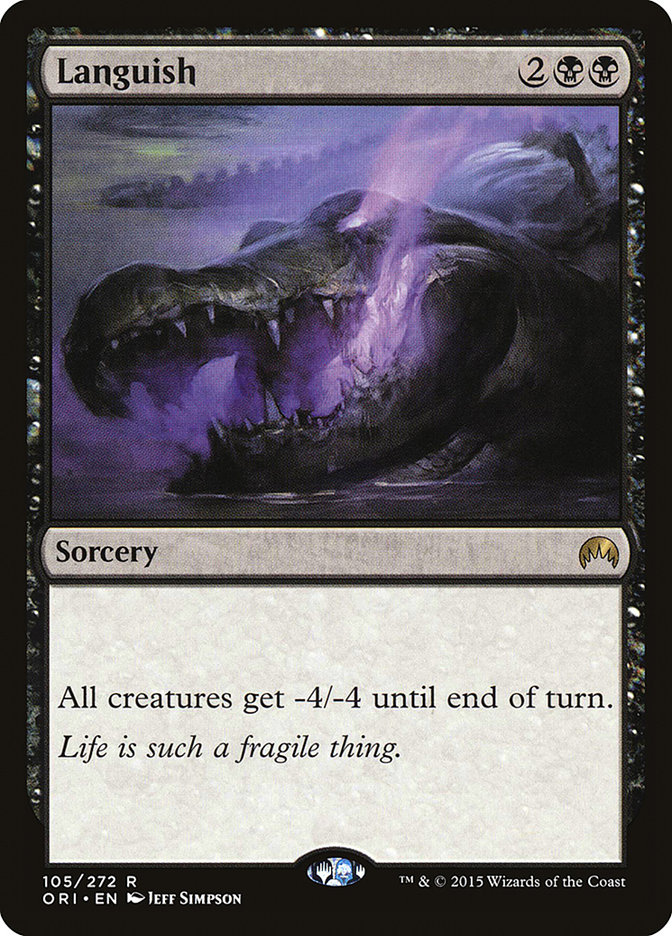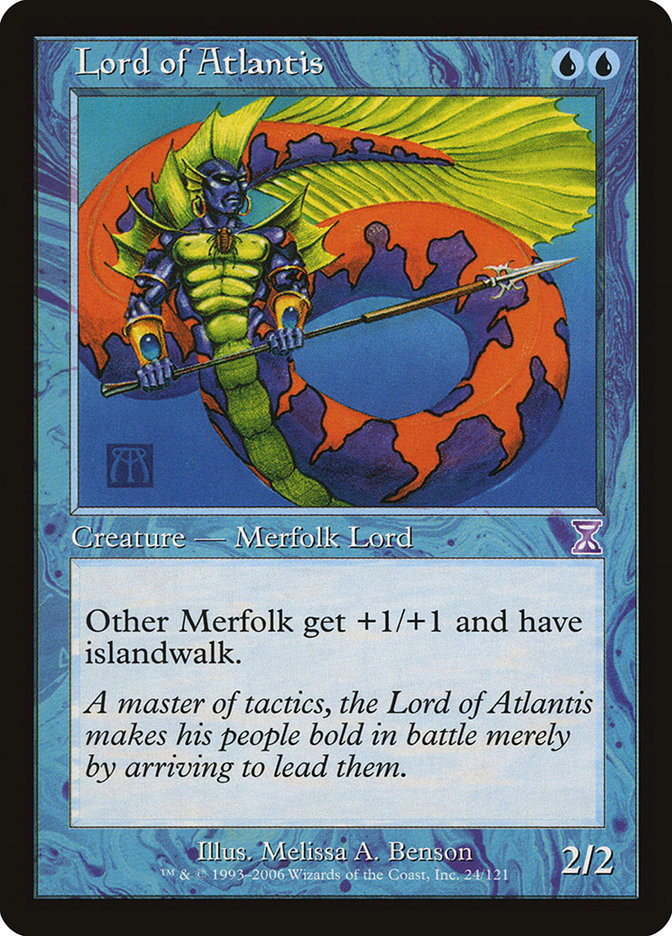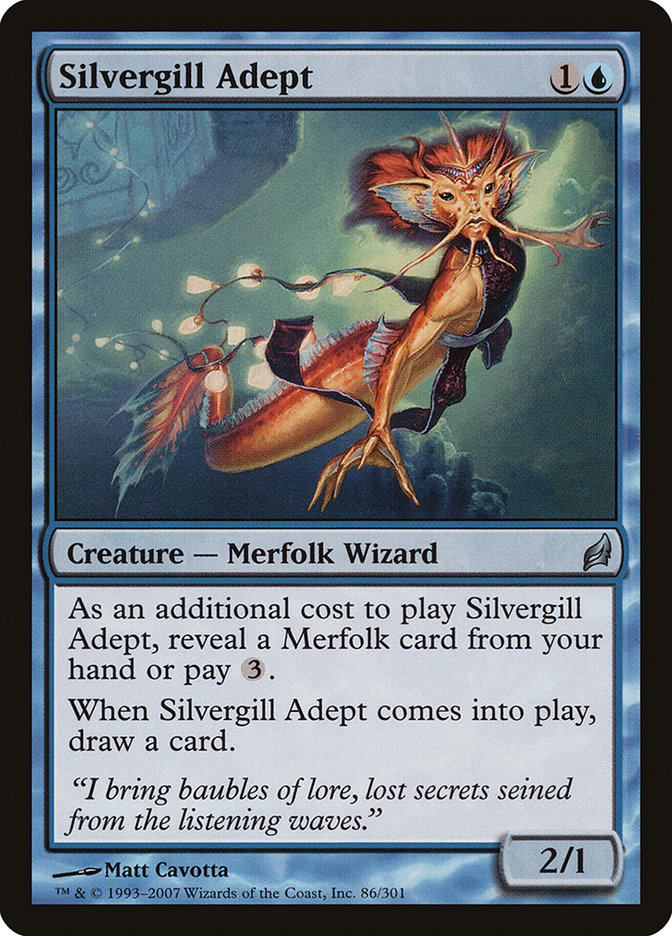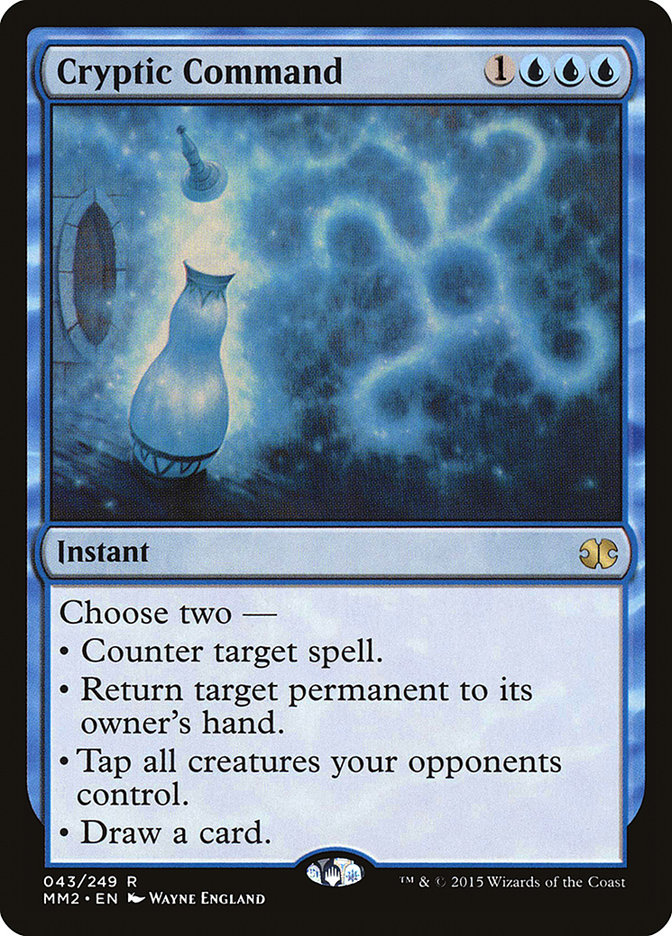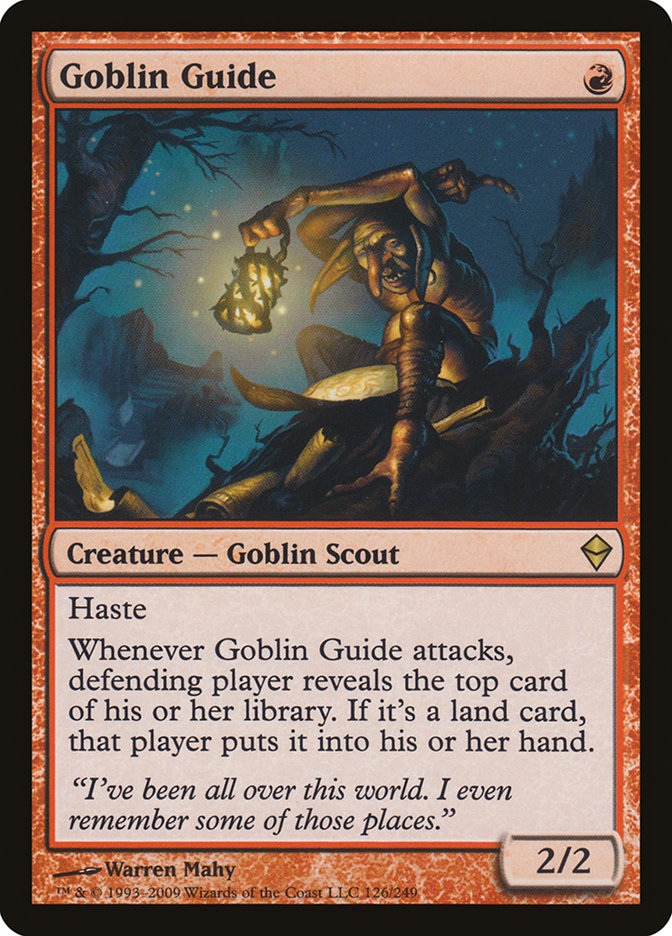Hello, everyone, and welcome to another edition of Fact or Fiction! We gave two columnists five statements and asked them, “Fact or Fiction?” Check out their answers below and vote for the Fact or Fiction winner at the end!
1. G/W Tokens will win the Standard Open at #SCGORL this weekend.
Ross Merriam: Fact. Or at least as much as it can be. Winning an Open is no easy feat, and despite G/W Tokens being firmly entrenched as the best deck in Standard, it will still only be a fraction of the field in Orlando this weekend. I doubt it is an outright favorite against the rest of the field, but it is far closer than any other deck in the format, and probably closer than any deck we have seen in years.
You could compare it to Abzan during Khans of Tarkir Standard, but there were so many variants of Abzan decks that lumping them all into the same category was an overgeneralization and no single variant was ever truly dominant. During the days of Theros block we had a very narrow format consisting mostly of U/W Control, Mono-Blue Devotion, and Mono-Black Devotion, but all three of those decks had a very good shot of taking down a tournament on a given weekend.
G/W Tokens is a singular deck that appears to be well ahead of even its closest competitors, to the point where I think it’s a mistake to play any other deck. The deck has a rare combination of cards letting it play effectively at every stage of the game. You can get aggressive with Sylvan Advocate; Gideon, Ally of Zendikar; and Dromoka’s Command. You can play for a long game by generating extra resources with your planeswalkers, Evolutionary Leap, and Hangarback Walker. You can even combo kill people out of nowhere with Secure the Wastes and Anthems or Westvale Abbey. And Archangel Avacyn is there to help you turn the corner when you need to cede some early advantage but still close out the game quickly. G/W Tokens does it all, and that includes winning nearly every tournament in sight.
Michael Majors: Fact. Especially if Gerry Thompson shows up. All jokes aside, despite it being a fairly outrageous thing to call the archetype that will win a Constructed tournament, G/W Tokens is an incredibly safe choice.
I don’t mean to draw a comparison to the recently nerfed Modern Eldrazi in terms of raw power level, but to me they both encompass the idea that you’d better have a very good reason for registering another deck this weekend.
G/W Tokens won the Pro Tour and three of the six Grand Prix in this Standard format (while losing in the finals of a fourth) despite it not even being clear whether the deck has been “solved.” There is a great deal of differentiation amongst the flex slots in the deck, and Gerry’s 15-0 performance in Atlanta has set a new bar for how to build the deck’s sideboard.
The deck is outrageously powerful and flexible. It plays a proactive early game while having one of the most robust end-games in the format due to Evolutionary Leap. It is also difficult to play against due to the way it can pace the game with planeswalkers, the aforementioned Leap, and Archangel Avacyn. G/W Tokens can frequently play a better control game than most of the decks we label as such in this format.
“Craw-Blade” may not actually win the tournament this weekend, but it is the best deck in the format. It would be a tough sell for me to register anything else before Pro Tour Eldritch Moon.
2. There is still a top-tier Standard deck that no one has found yet.
Ross Merriam: Fiction. When Prism Ring starts making its way into Standard decks, you know we’re scraping the bottom of the barrel. The reality of our current Standard: the green and white cards are so far above most of the rest of the format, the barrier to entry is exceedingly high. Black has made some inroads with Kalitas, Traitor of Ghet and Languish, but red is nearly nonexistent and blue has had to resort to some extreme measures in order to compete because they can’t compete on power level.
Trying to compete with Humans, Collected Company, Languish, and G/W Tokens is a daunting task, and since the current top decks are so heavily customizable, it is unlikely that we find a new deck that can compete for more than a one-week window as the field is caught unprepared. A long-lasting, top-tier Standard deck has to be able to compete on the power level of its cards, and we as a community have identified the most powerful options and tuned the appropriate shells around them. The time before Eldritch Moon will be a time to further refine these lists, determine the strengths and weaknesses of competing variants, and lament just how good G/W Tokens is. Fortunately, Eldritch Moon spoilers drop in a few weeks, so it won’t be long until we can put our brewing caps on again.
Michael Majors: Fiction. The brewer in me wants this to be the true, but I sincerely doubt it. Despite the fact that some really cool decks have popped up recently (Mono-Blue Prison, U/R Fliers) and there being noteworthy innovations in existing archetypes (Bant Humans), I just don’t see this being the case. The former two decks don’t even strike me as long-term players for being top-tier, while the latter is more of a small tweak on a selection of cards that have been established in the current Standard format.
It’s difficult to build a deck that can compete on card quality with something like G/W Tokens, W/B Control, or Bant Humans. The marquee build-around-me cards in the format like Collected Company, Cryptolith Rite, and Thalia’s Lieutenant have been fleshed out and the rest of the staples are just too good. Even the “control” decks are really more akin to midrange decks. In reality, they are all stacks of proactive two-for-ones featuring Kalitas, Traitor of Ghet. The Modern-playable Vampire is basically enabling these decks all on his own.
Boss Humans can kill or put you into low single-digits by turn 4, and the decks that slam you from the top ropes are exiling two of your best permanents while likely killing all of your creatures with Kozilek’s Return simultaneously. It doesn’t matter where you are on the spectrum in Shadows Standard, because there’s already a deck that’s adept at doing your thing.
I don’t think we are going to see anything new and crazy in the next month, but I do believe there to be some sleepers in the format, notably Sultai Midrange. The Dark Petition / Seasons Past engine is ridiculously powerful and green’s bridge cards (Sylvan Advocate and Nissa, Vastwood Seer particularly) are effective in every stage in the game. I think this is a deck that can actually compete toe-to-toe with G/W Tokens while also just being a balanced and interactive deck that features an insurmountable end-game. Watch out for this one.
3. Sideboarding in this Standard format is more important than it has been in years.
Ross Merriam: Fiction. Sideboarding is very important, as Gerry Thompson showed with his unique list for G/W Tokens at #SCGATL, but Theros-Khans Standard was not too long ago and that was a format where having a well-built sideboard and knowing how to adjust your plan on the fly was the single most important skill factor in your success. Plans could shift wildly depending on whether you were playing first or not, and there was widespread disagreement about how to sideboard in nearly every matchup. No card was guaranteed a spot on the team after Game 1, not even format superstars like Thoughtseize and Goblin Rabblemaster.
This format places more importance on in-game planning and sequencing, since the various planeswalkers, instant-speed threats, and activated abilities like Eldrazi Displacer leave you with plenty of options for how to play out your turns. Sideboarding is still an integral skill but not to the level of Theros-Khans Standard.
Michael Majors: Fact. I think? This is a difficult question to answer. There are basically two lines of thinking here for me. The first is that Magic has fundamentally changed due to design philosophy within R & D. Gone are the days of “traditional” sideboard cards. There aren’t the likes of Kor Firewalker, Timely Reinforcements, Celestial Purge, Deathmark, Slay, Flashfreeze, and many of what we might refer to as “hate cards” anymore. The only real example of a hyper-efficient but narrow answer these days is Negate. It is also no coincidence that Negate is one of the largest draws to blue in general, and that it is basically in every sideboard with the color in heavy numbers because it is so effective at what it does.
Wizards doesn’t want us to simply be pointing one- and two-mana spells at our opponents’ permanents anymore. Interacting on the battlefield is the most important thing in Magic right now, and as a result, instead of being able to “lazily” fill our sideboards with narrow and powerful cards, we actually have to understand the texture of the matchups.
What matters? How can I outmaneuver my opponent? What strategy should I employ? These are the questions you need to be answering. Sideboarding in Standard right now means understanding what the problems are from matchup to matchup and finding effective solutions to those issues. The fact that it is so difficult to get an edge means that it is highly rewarding when one actually does.
Going back to harping on G/W Tokens, Gerry Thompson dominated the Swiss in Atlanta largely because he had trump in many matchups. Many of his opponents perceived his deck to simply be a traditional midrange deck full of planeswalkers. His slant toward becoming more controlling post-sideboard with Nissa, Vastwood Seer as a bridge to Planar Outburst alongside Den Protector, spot removal, and Evolutionary Leap meant that their plan became ineffective.
That being said, my second reaction to this question is “fiction.” Odds are good that there were real edges to be gained in Standard years ago as well, even when the quality of spells and permanents was vastly different from what they are now. I’d like to just think that it’s something we talk about more now these days. Magic is a complicated game, and the amount of content produced today is exponentially higher than it was even just a few years ago. As we play, write, and read more about the game, it is natural that our understanding of what is important will increase as well.
4. Modern Merfolk has been putting up first place finishes at Grand Prix, SCG Tour® Classics, and IQs like crazy lately. This deck is now part of Modern’s top tier.
Ross Merriam: Fiction. Sorry, Mrs. Mulligan! Your beloved fishies still aren’t quite there, although they are close. I went back and looked at the numbers for Merfolk over Modern Weekend, and the most surprising find was how polarized they were between #GPLA and #GPCHAR. In Los Angeles, Merfolk was one of the most-represented decks in the Day 2 metagame and the Top 32 decks, and it took down the trophy. But in Charlotte it was nowhere to be found.
It is this inconsistency that worries me, because the recent surge of success Merfolk has experienced in Classics and IQs could be a result of the positive press gained from its performance in LA rather than a result of its ascension into the top tier of Modern. There is no doubt that the deck has gained a lot in recent sets with cards like Tidebinder Mage, Harbinger of the Tides, and Master of Waves giving the deck some more power and additional interaction, which is important because the options for spells are limited when you are mono-blue and need to be creature-heavy to take advantage of Aether Vial. Importantly, these new additions give the deck some variability in build, so you can more readily adapt to the metagame and your opponent is less able to predict exactly what they will be fighting against.
With Merfolk languishing on the fringes of Modern for a while now, it would not be at all surprising if this recent surge is due to the metagame underestimating its new power, even if it’s not necessarily a top-tier deck. The last step for Merfolk to prove itself is to become a consistent performer, always in the hunt for Top 8s and trophies, and to be able to put up results even when the metagame reacts to prepare for it. Until Merfolk can come into a tournament as a known quantity and defeat well-prepared opponents, I’ll retain my skepticism that Mono-Blue Pack Rats is a viable Modern deck. (Just kidding about the Pack Rat thing….kind of.)
Michael Majors: Fact. Despite the fact that I don’t think Merfolk is one of the best decks in Modern, it would be foolish to not prepare for it, considering its success.
Master of Waves gave the archetype a significant power boost, and the popularity of the deck on Magic Online has finally started to translate into a string of results in paper tournaments as well.
One of the largest misconceptions about Merfolk is that it is an aggro-control deck or has significant means of disruption. In reality, Merfolk is more of a glorified aggressive deck that is able to leverage a disruption spell in Spreading Seas incidentally to make all of its creatures unblockable. This is a huge boon against other creature decks, where Merfolk’s cards are a bit weaker pound-for-pound. Against combo decks and other archetypes, Merfolk is still perfectly capable of being explosive and killing quickly while also employing some light countermagic from the sideboard if desired.
A hint for anyone playing against the fishies: Silvergill Adept is the best card in their deck. If one has the option of countering or discarding the Adept, it is very likely to be correct.
5. The Top 8 results for recent Modern events are incredibly diverse. This is the healthiest this format has been since its inception.
Ross Merriam: Fact. What is the best deck in Modern? Does anyone actually know? Does anyone even think they know? Abzan Company looked to take the mantle of best deck for a while, but the format adapted. Zoo decks emerged while Affinity waned as the format’s top aggro deck, but that trend quickly reversed itself during Modern Weekend. Jeskai Control received plenty of hype but failed to live up to it, merely existing as one of many in a sea of potential contenders. The recent Grand Prix were won by Merfolk and Ad Nauseam. If you hate yourself and everyone around you, you can still play Tron, even without Eye of Ugin. Oh, and there are still Burn, Infect, Jund, and multiple Valakut, the Molten Pinnacle decks out there putting up results.
Eldrazi, Amulet Bloom, Splinter Twin, and Birthing Pod put some harsh constraints on what you could do in the format, and ultimately, each one of them was so oppressively powerful that not playing one of them was likely a mistake. Modern right now looks impressively balanced and it’s diverse enough that trying to metagame the format is essentially impossible. Your best strategy is to pick a deck you enjoy and learn it well.
I still have fond memories of the first Modern PTQ season, when the format was in its infancy; Cloudpost, Rite of Flame, and the blue cantrips had been banned; and we were free to play anything and explore our favorite cards and decks of the past. But that format’s health was a mirage, since the many oppressive decks had not yet been found. Melira Pod was just taking shape and Tron only emerged at the end of the season. We were in the Wild West, and once the format was settled, the range of options narrowed significantly. Modern right now is a well-explored format but still exhibits incredible diversity, which is a much stronger testament to its health.
Michael Majors: Fact. I don’t really have any hard evidence to support this claim, but I do know that I was immediately thinking about the format again after the last tournament I played. After the banning of Eye of Ugin, it feels like Modern has settled into the place that Wizards wants it.
There are a huge variety of viable proactive strategies as we might have guessed when we were heading into #PTOGW, but there have also been new developments in the format.
The printing of Nahiri, the Harbinger has dramatically evolved Jeskai Control alongside enabling some innovation in other strategies, while Eldrazi has settled into a perfectly fair spot in the format. It isn’t clear exactly which versions are the best, but these decks are winning while also being reasonable to play against.
The fact of the matter is that the removal of Splinter Twin and Amulet Bloom from the format has made it extremely difficult to die before turn 4 unless your opponent is attacking you with creatures. This has fundamentally made games more interactive, and that’s basically another word for fun when it comes to Magic.
It isn’t particularly clear whether this diversity will last. Odds are fairly good that the format will once again narrow, but for now there is a great deal of design space due to the large amount of change that has occurred in a short period of time.
Just about any established deck is a perfectly fine choice to play in a tournament right now, and I can’t think of a much better indicator of a healthy format.




